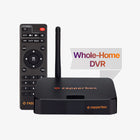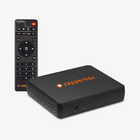A Q&A with Javier Ruano, GM Televes USA
We’ve found antenna reflectors to always be a puzzling oddity. Here is a Q&A with Javier Ruano, GM of Televes USA to help clear up some questions that we had about antenna reflectors and amplifiers.
Some antennas have detachable reflectors. Under what circumstances do we need to use a reflector?
The addition of the reflector increases the forward gain of the antenna (forward of the reflector) dramatically. When antennas are used indoors, quite often, the biggest problem for reception is the multipath reflections caused by the signal bouncing from surfaces after it enters the dwelling. The reflector helps minimize rear reception and interference and increases its forward gain to better receive signals in this direction. In short, an antenna with a reflector will have more gain and work better, but it will have to be aimed in the direction of the towers.
Without a reflector an antenna becomes more omnidirectional and perhaps aesthetically less intrusive, and may be an option when the situation allows, but in general it is always best to use the reflector and aim the antenna in the direction of the transmitters if possible. Let’s not forget broadcast television is a line-of-sight method of delivery.
Does a reflector improve reception for both ATSC 1.0 (8-VSB) and ATSC 3.0 (COFDM) signals?
Yes. Reflectors work the same for both modulations. Antennas understand RF, not modulation.
Should antenna reflectors be used outdoors too?
Yes. A reflector will always improve the forward gain. If you can aim the antenna at the tower, use the reflector.
Some reflectors use a wire mesh while others use a solid metal plate or a curved surface. Is one type of reflector better than the other?
It depends on the design of the antenna itself, some dipole array flat antenna designs will have flat reflectors, while corner reflectors and yagi-corner designs will have angled or parabolic reflectors. If the antenna is properly designed, it will have the right kind of reflector and the metal needed to work at the frequencies it is intended to receive.
We are digressing from reflectors but what is the best location for a signal amplifier in relation to the antenna?
The electromagnetic signals acquired by an over the air antenna are extremely faint and quickly degrade when distributed. A properly filtering low-noise preamplifier must be as close to the acquisition point as possible for maximum effect and to negate the losses of the distribution network. What you lose in distribution you will not recover by adding a “booster” after the fact.




